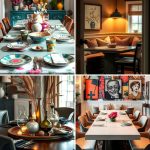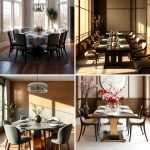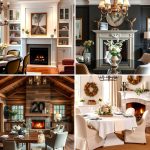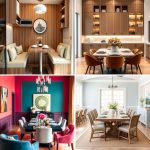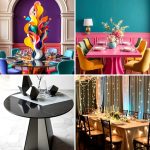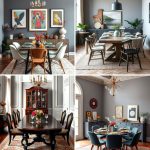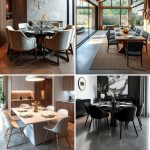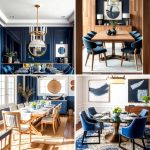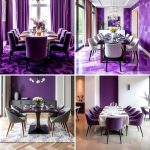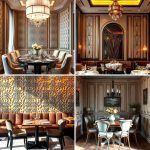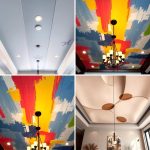The 70s era brought forward a fresh wave of creativity, characterized by warm colors, bold statements, and playful energy. Diving into 70s dining room design ideas unlocks a treasure trove of inspiration that redefines modern living with a retro twist. Every detail from chunky prints to glass accents serves as an invitation to relive an era that celebrated individuality and fun. With these ideas, you can transform your dining space into a nostalgic yet functional haven. Explore 70s Dining Room Design Ideas to reimagine your space with timeless flair and creative vibrancy.
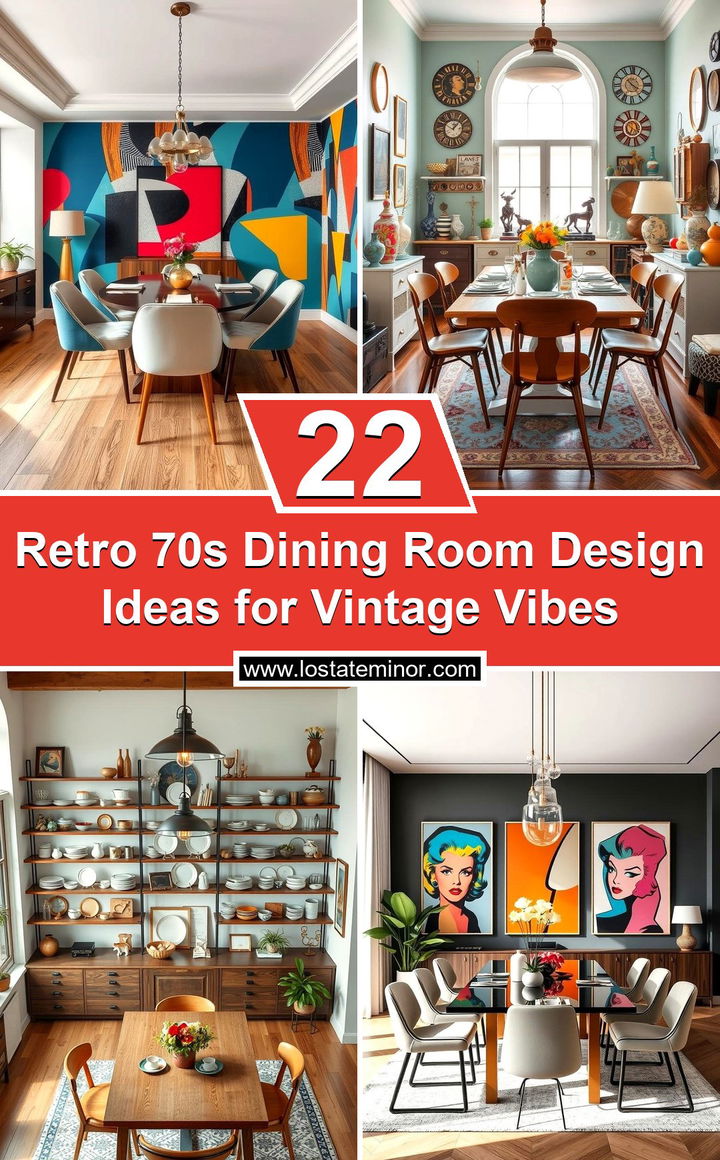
1. Embracing Earthy Hues

A warm and inviting color palette instantly transforms any dining room into a cozy retreat. Earthy tones reminiscent of the 70s set the mood by creating an intimate and grounded space. This design choice offers a practical benefit of flexibility—earthy shades easily complement various furnishings while evoking a sense of nostalgia. The soft, natural hues pair well with wood finishes and golden accents, making the room feel both timeless and modern. With an emphasis on simplicity and warmth, this color scheme creates a harmonious environment ideal for relaxed family meals and lively conversations.
2. Celebrating Bold Patterns

Have you ever felt drawn to striking geometries and vibrant prints? Bold patterns in 70s dining room design bring an energetic twist to everyday spaces. These dynamic designs mix playful motifs with retro flair, making them a practical choice for anyone looking to spark visual interest. By incorporating patterned wallpapers, table linens, or upholstered chairs, the room exudes character and nostalgia. The mixture of colors and shapes creates a stimulating ambiance that invites conversation and creativity. This design idea proves that experimenting with patterns can elevate the aesthetic appeal while maintaining a highly functional dining area.
3. Radiant Retro Lighting
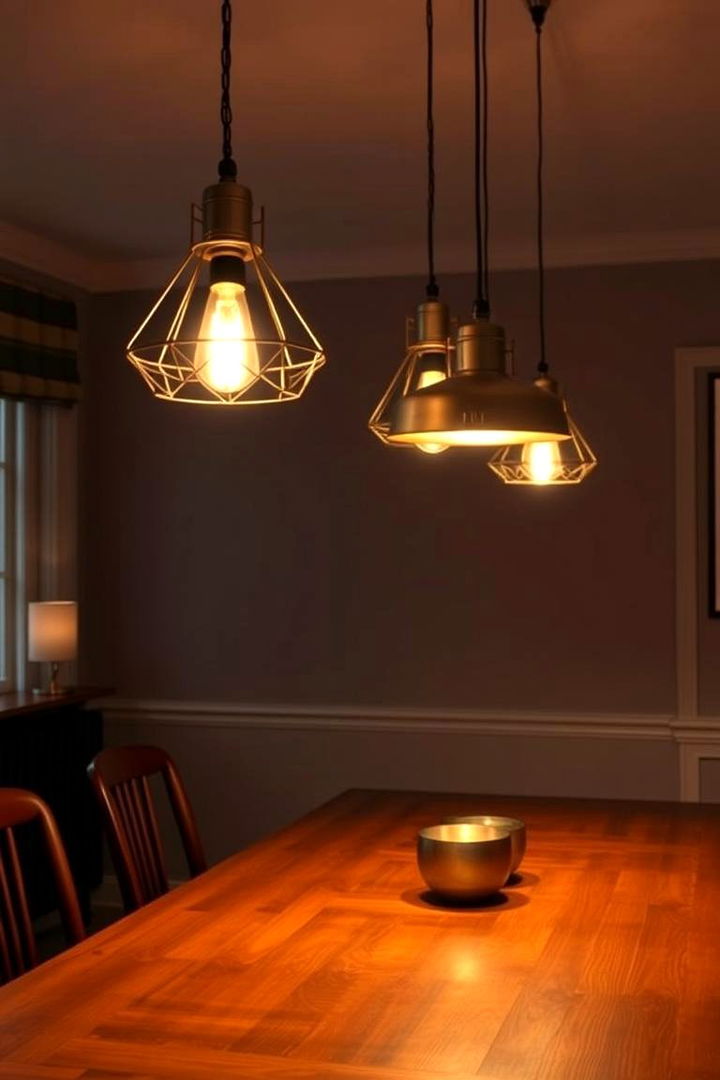
A room illuminated by vintage lighting fixtures exudes a captivating warmth and personality. Retro lighting not only serves as a functional element but also as a statement piece that anchors the entire design. The distinctive designs, often featuring geometric shapes and metallic accents, evoke the era’s charm. Practical benefits include enhanced ambiance and the ability to highlight key design features in the dining space. Embracing retro lighting can transform an ordinary room into a vibrant, visually stimulating area, creating a delightful interplay of shadows and light that welcomes guests with a sense of nostalgia.
4. Incorporating Vintage Furniture

Step into a dining room where vintage furniture tells its own story. Carefully selected pieces from the 70s such as classic dining chairs and retro tables meld functionality with a distinct historical flair. These items often feature unique craftsmanship that stands out in modern interiors. Beyond aesthetics, vintage furniture offers unrivaled durability and a touch of sustainable charm. Its presence not only enhances the room’s character but also infuses it with timeless design cues, proving that well-loved classics can elevate the overall dining experience while evoking warm memories of eras past.
5. Luxe Shag Carpets
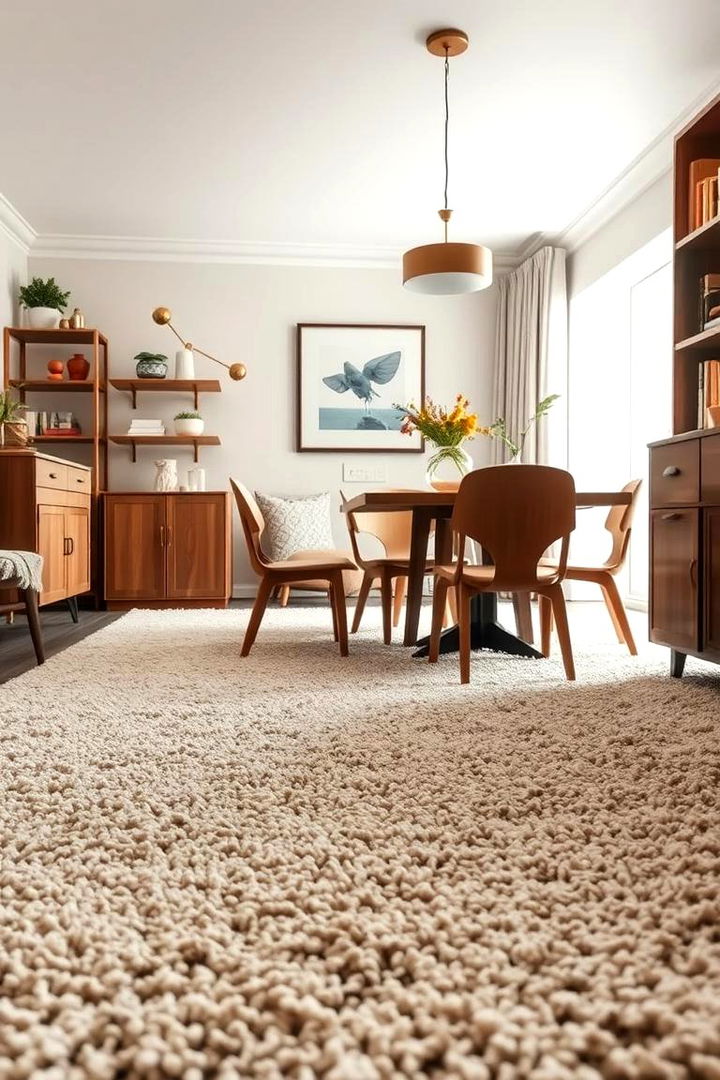
Imagine sinking your feet into a plush, shaggy carpet that defines a 70s-inspired dining room. Shag carpets add a level of comfort and luxury to the design, enhancing the room’s tactile allure. Their distinctive texture brings depth and warmth to the space, inviting guests to relax and linger. Practical and stylish, these carpets serve as a foundation that ties the entire room together by complementing retro furniture and bold accents. This design choice not only increases comfort but also infuses a subtle layer of nostalgic charm, making every meal feel like a leisurely retreat.
6. Statement Artwork Displays
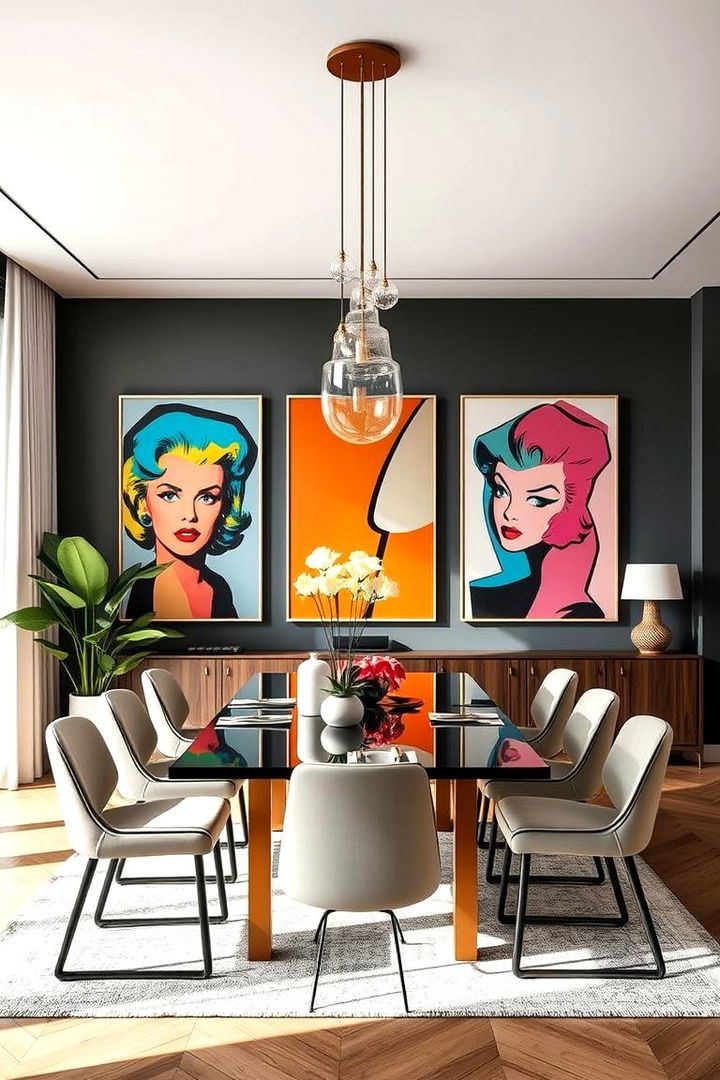
Transform your dining room into a gallery with curated statement artworks that echo the 70s vibe. Eye-catching pieces featuring pop art, abstract forms, or retro motifs serve as conversation starters and focal points. The bold, dynamic art elevates the room’s decor while adding layers of personality and charm. This design strategy allows you to showcase personal taste and creativity while anchoring the overall theme. Integrating diverse art collections not only reconnects with the vibrant spirit of the era but also creates a unique ambiance that makes your dining space truly memorable and welcoming for any gathering.
7. Chic Glass and Lucite Accents
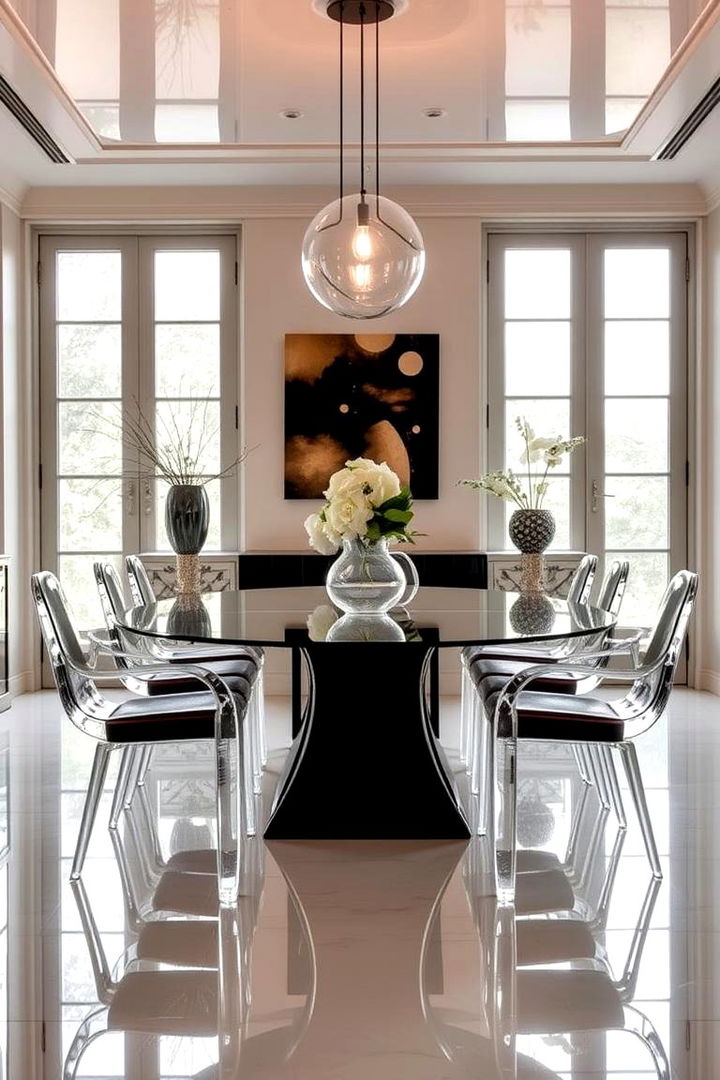
In a dining room enriched with 70s style, glass and lucite accents offer a modern twist on retro elegance. These materials add a sense of lightness and sophistication without overwhelming the space. Their reflective surfaces catch ambient light, creating visually appealing highlights throughout the room. Practical benefits include versatility and easy incorporation with diverse design elements, from minimalist table decor to statement pieces. By combining transparency with intricate detailing, you achieve a look that honors the vintage era while embracing contemporary design sensibilities, resulting in a space that feels both timeless and refreshingly modern.
8. Modular Seating Arrangements

A flexible seating plan is at the heart of dynamic 70s dining room design. Modular seating arrangements empower you to tailor your space according to the occasion. This adaptable layout not only offers practical benefits like optimal space usage but also enhances social interactions. The mix-and-match style of retro chairs and benches creates a casual, inviting atmosphere for entertaining guests. With the ability to rearrange pieces easily, these seating choices blend comfort with creativity. This design idea fosters a sense of intimacy and modern practicality, ensuring that your dining room remains both functional and visually striking.
9. Sleek Chrome Accents
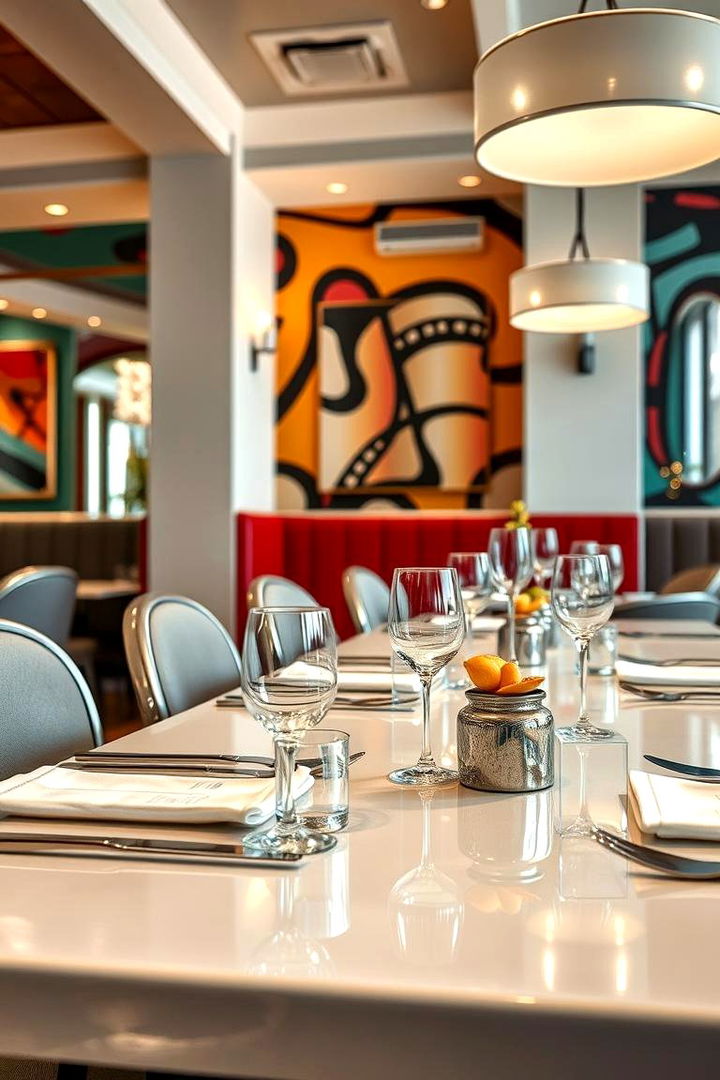
Chrome accents capture the luminous spirit of the 70s, adding a touch of glamor and sophistication to dining rooms. These reflective details work well with both modern and retro elements, offering a bridge between eras. Practical advantages include their durability and ease of cleaning, while stylistically, they serve as elegant highlights on furniture, fixtures, and decor. The sleek, polished finish of chrome creates a striking contrast against warmer textures and bold colors. Embracing this material allows you to enjoy both functionality and a sense of refined charm, making your dining room design both contemporary and evocative of vintage allure.
10. Transparent Lucite Tables
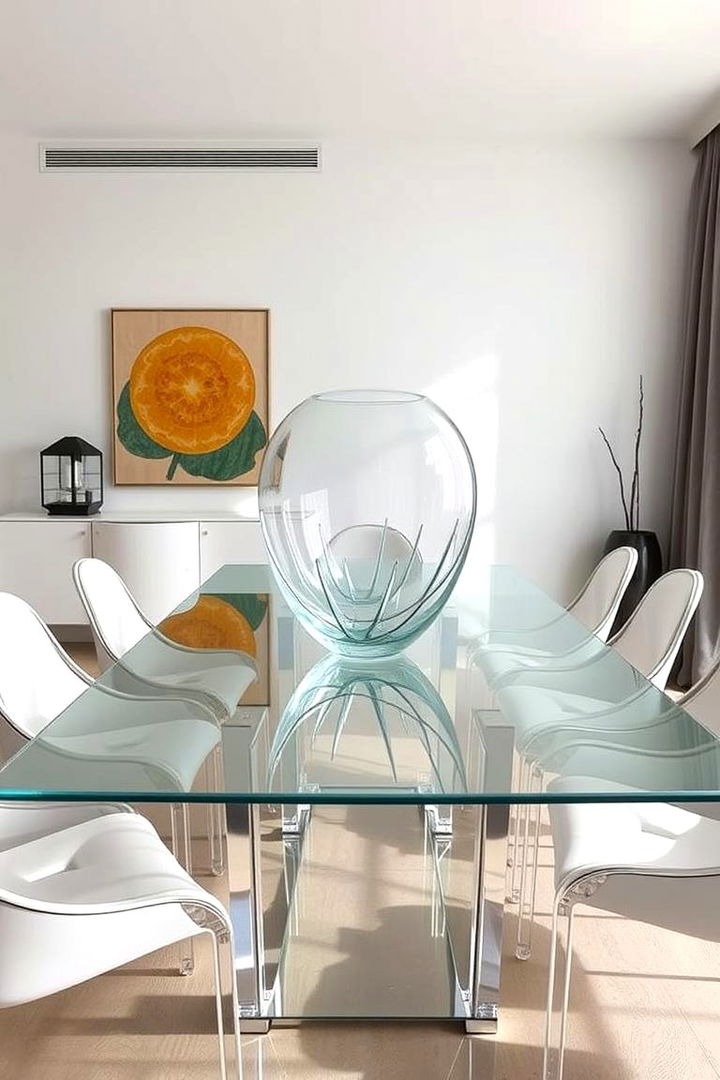
Lucite tables are a standout feature in 70s dining room design, combining modern aesthetics with retro charm. Their transparent appearance allows the vibrant aspects of your room to shine through without visual interruption. Practically, these tables are versatile, easily pairing with diverse materials and design elements ranging from patterned upholstery to earthy flooring. This design element benefits those seeking a functional yet stylish centerpiece for dining. The clear, modern look not only enhances spatial flow but also adds a futuristic twist to the nostalgic ambiance, proving that timeless style truly blends the past with present-day innovation.
11. Ornate Mirror Details
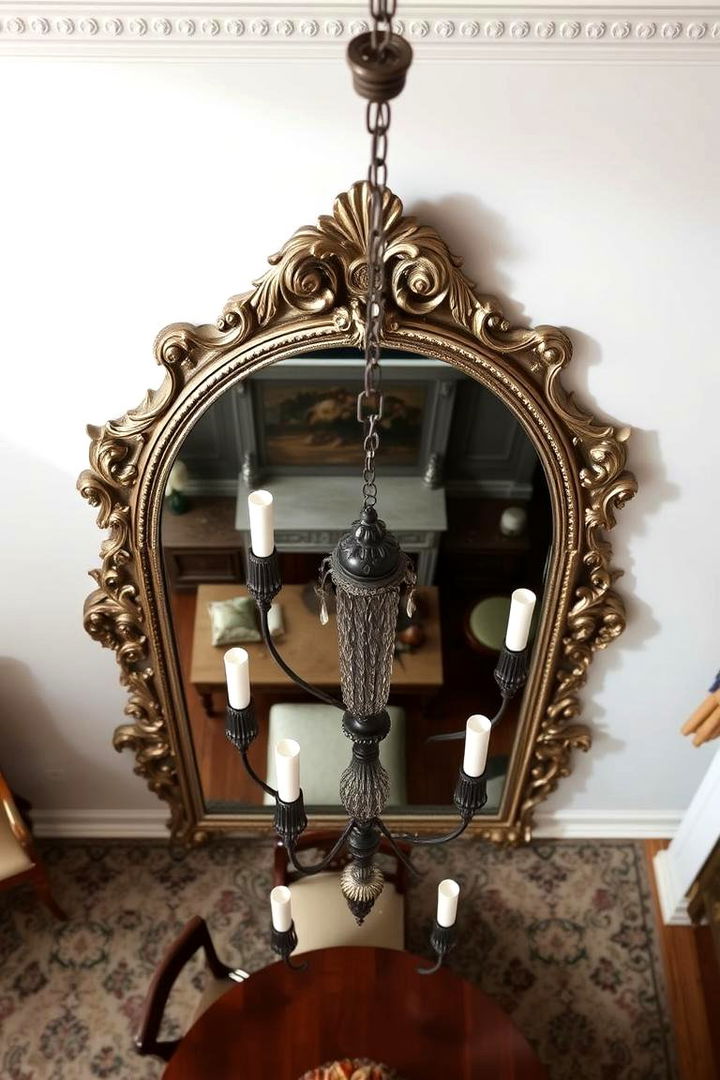
Reflecting the iconic glamour of the 70s, ornate mirrors serve as both decorative and functional elements in dining room design. Their intricate frames and reflective surfaces amplify light, instantly brightening up the space. Mirrors enhance the aesthetic appeal by adding depth and dimension to an otherwise simple layout. Beyond their stylish impact, they also provide a practical benefit by visually enlarging the room. Integrating ornate mirror details ties together various retro elements and creates a sense of balance and elegance while maintaining a nod to the vintage era, ensuring a dining area that feels both expansive and artfully curated.
12. Eclectic Accessory Mix
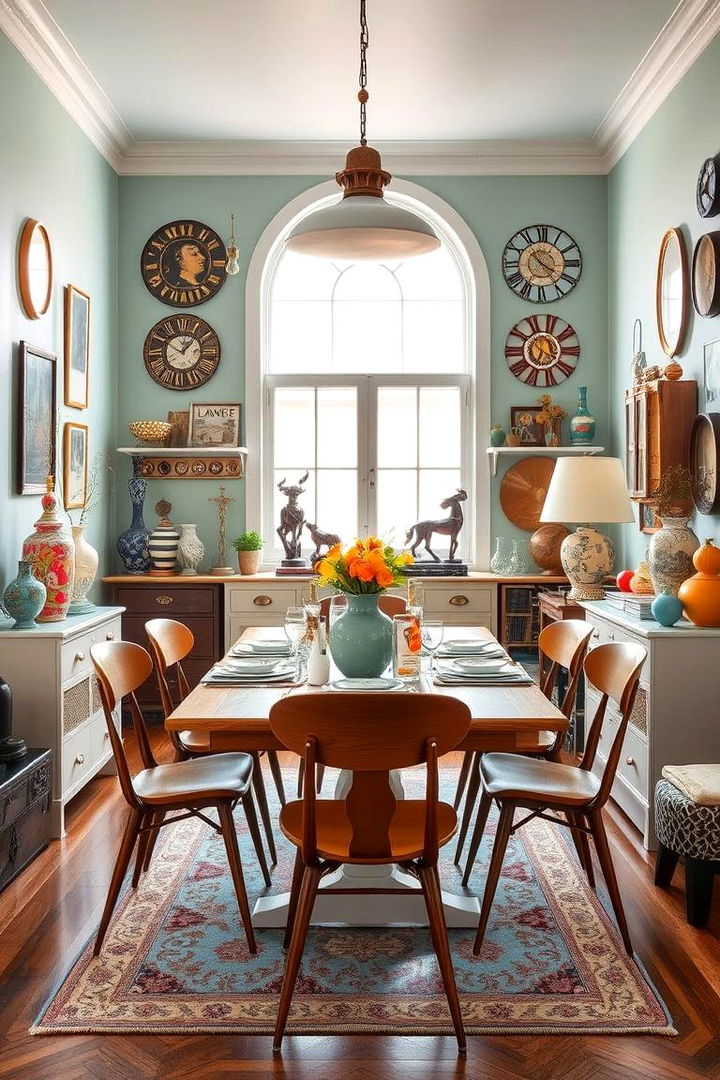
A vibrant mix of eclectic accessories punctuates the spirit of 70s dining room design by celebrating diversity and creative flair. Intriguing decor items such as vintage vases, quirky sculptures, and patterned tableware bring a personal touch while enhancing functional decor. The practical advantage lies in the freedom to mix and match unique pieces, resulting in a truly personalized space. This method not only promotes an engaging atmosphere but also allows for a playful interplay of textures, materials, and colors. Embrace a curated array of accessories to showcase your distinctive taste and effortlessly blend functionality with retro-inspired style.
13. Bold Wallpaper Statements
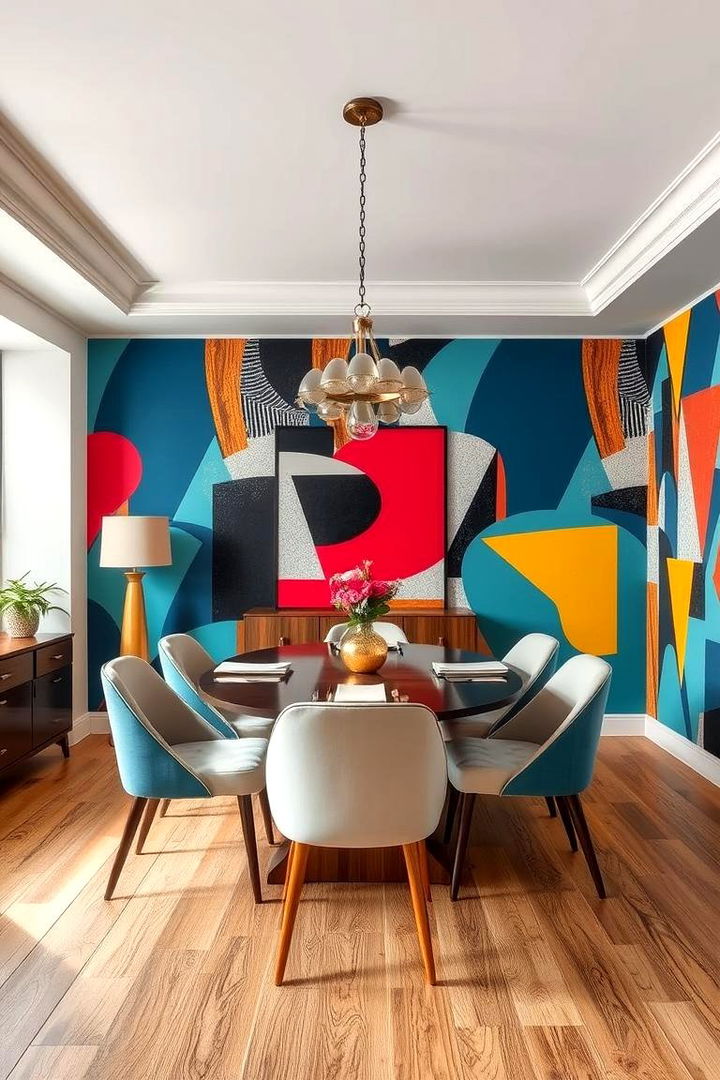
Bold, patterned wallpaper creates a dynamic backdrop for 70s dining room design that is visually arresting yet distinctly charming. This design choice serves as both art and ambiance, setting an energetic tone across the entire space. Practical benefits include transforming the mood, offering a focal point, and unifying the elements within the room. The vivid prints, ranging from geometric shapes to abstract swirls, can instantly elevate a simple dining area into a statement room. By using wallpaper to highlight the space, you can achieve an environment that is as engaging as it is functional, ensuring that every meal is surrounded by creative inspiration.
14. Warm Wooden Paneling
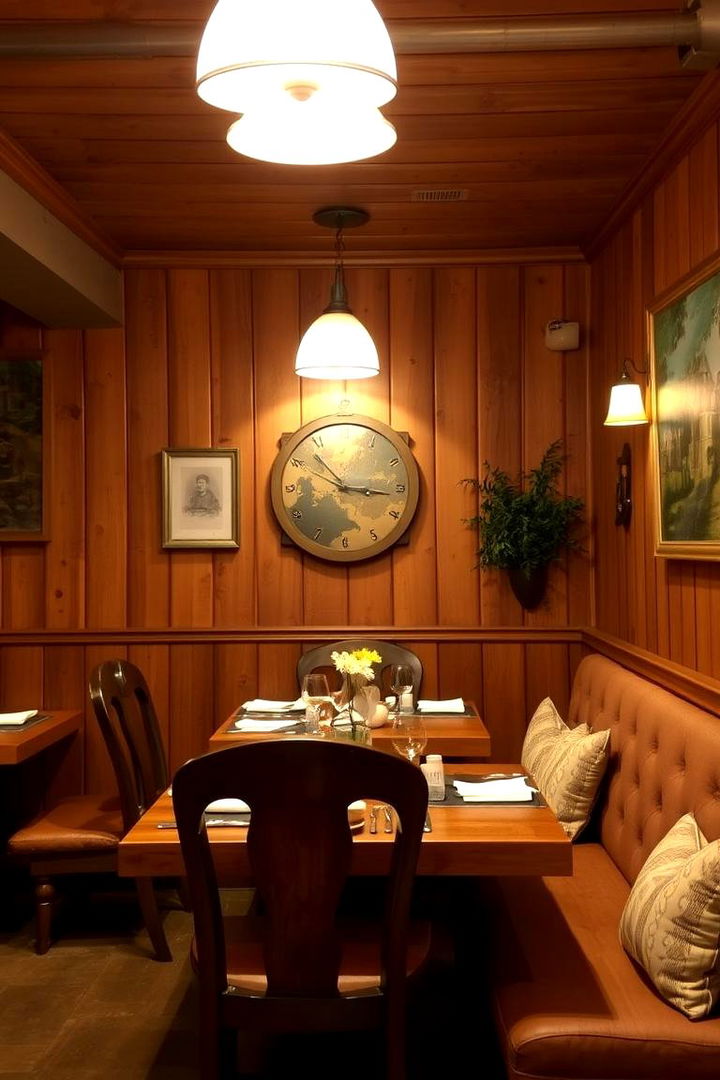
Imagine the nostalgic charm of wooden paneling wrapped around your dining room walls, evoking a classic 70s atmosphere. This design element lends warmth and structure to the space, creating a comfortable and rustic vibe. Beyond visual appeal, wooden paneling provides practical insulation and durability. Its natural textures and rich hues serve as a perfect canvas for pairing with vintage furniture and modern decor. Integrating such elements not only enhances the overall aesthetic but also creates an inviting ambiance for family gatherings and friendly dinners, combining functionality with a timeless style that whispers of a bygone era.
15. Funky Textile Choices
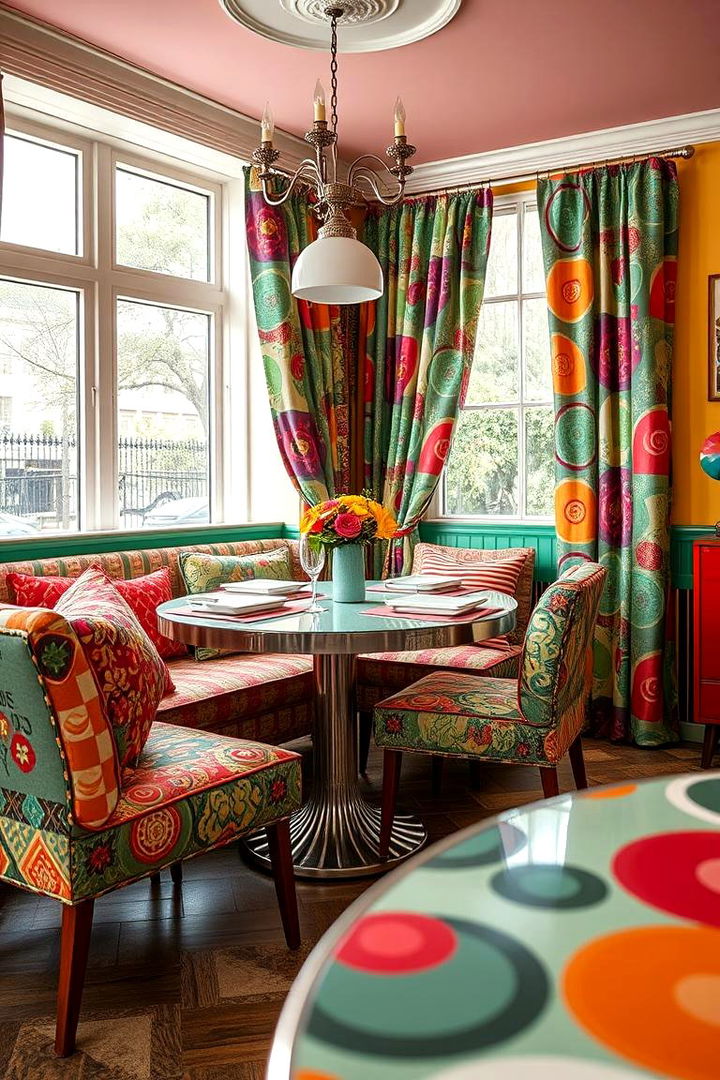
Funky textiles are the heartbeat of 70s design, injecting the dining room environment with lively energy and retro character. Creative use of fabrics on cushions, curtains, or chair upholstery introduces vibrant patterns and playful textures to the space. This approach offers practical benefits by softening hard surfaces and adding a layer of comfort. The unique blends of fabrics create a tactile experience full of color and pattern that reflects the daring design spirit of the era. By embracing funky textiles, you not only enhance your room’s visual appeal but also foster an engaging and spirited atmosphere perfect for memorable dining experiences.
16. Patterned Upholstery Innovations

Patterned upholstery brings sophistication and nostalgic charm to dining room seating with striking designs that capture the essence of the 70s. These bold textiles offer not only aesthetic value but also practical comfort and durability. Chairs and benches adorned with unique, vibrant fabrics create a cozy yet stylish setting for gatherings. The innovative patterns merge retro influences with modern trends, offering an engaging mix of comfort and design. This approach transforms dining areas into dynamic spaces where texture and color coalesce, making every seating arrangement a canvas of vintage style and personalized creativity.
17. Open Shelving Displays
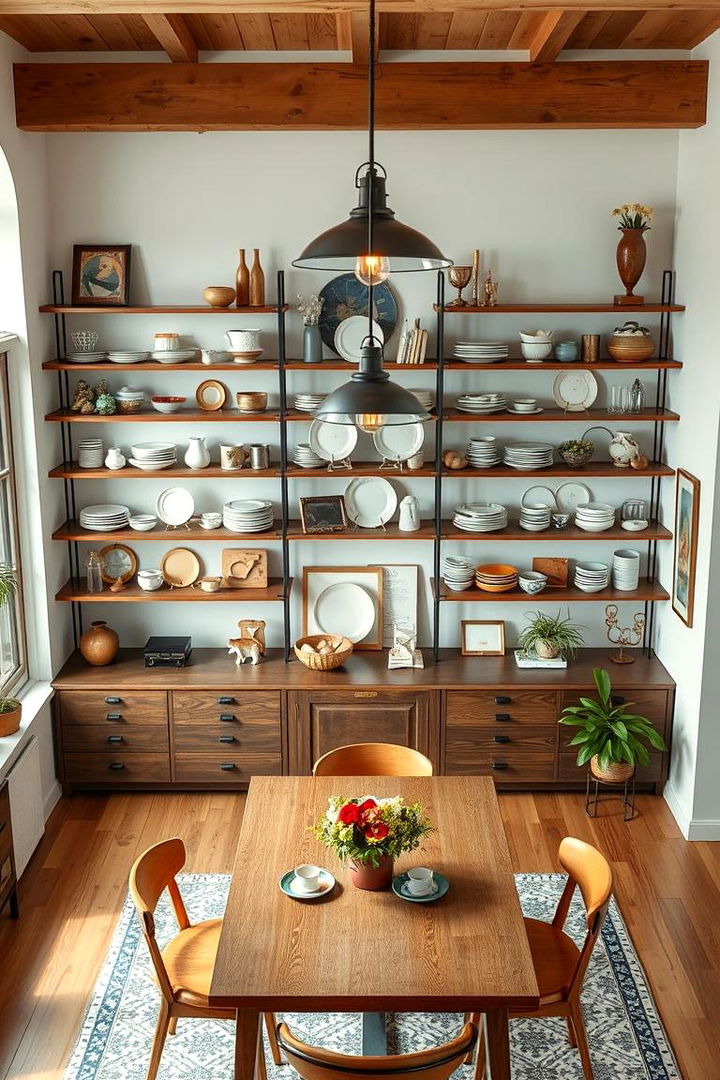
Open shelving is a practical way to showcase your cherished vintage dishes, collectibles, and decor in a 70s-inspired dining room. This design idea allows you to highlight decorative items while keeping essentials easily accessible. Open shelves provide a functional storage solution that doubles as a gallery for retro treasures, encouraging an organized yet dynamic display. Beyond practicality, this approach invites a sense of openness and fluidity that enhances the room’s overall ambiance. By integrating open shelving, you blend utility with artful expression, creating a space that is both visually captivating and superbly functional for everyday dining experiences.
18. Geometric Design Elements
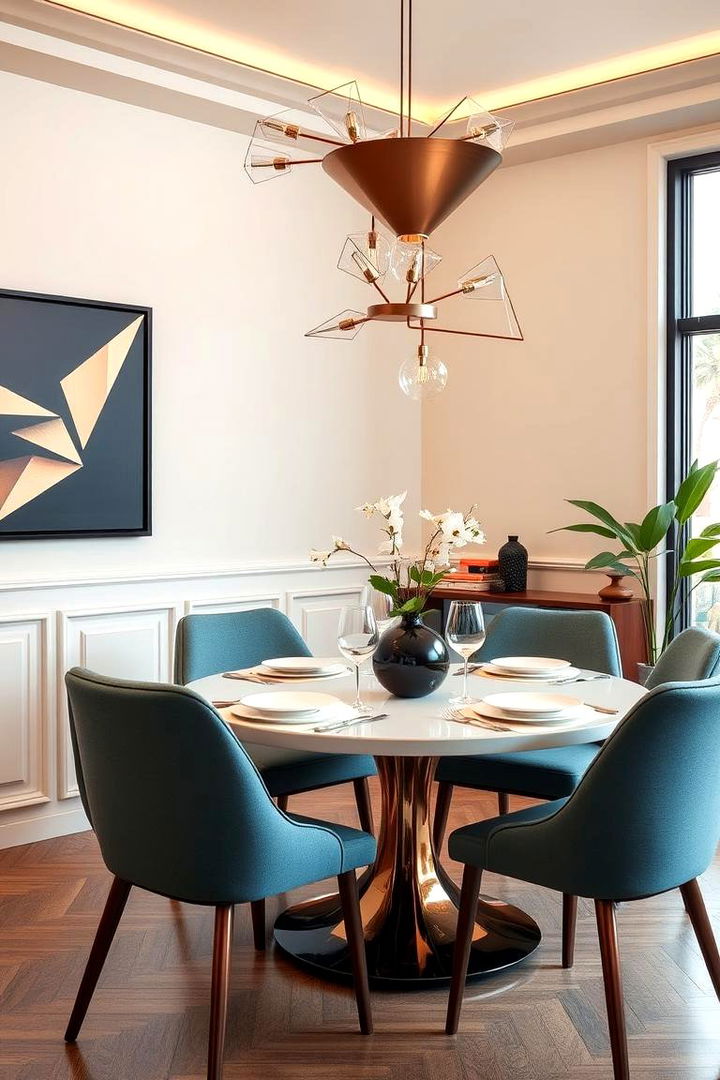
Geometric designs add precision and creative flair to dining room interiors, echoing the bold visual statements of the 70s. Incorporating angular patterns through decor, furniture, or lighting establishes a sense of order and artistic boldness. The clear lines and structured forms not only enhance visual interest but also create functional zones within the space. This design approach allows for an interplay between modern simplicity and retro extravagance, making the dining room both efficient and expressive. Embracing geometric elements invites a refreshingly organized yet whimsical atmosphere, where every detail contributes to a cohesive, inspiring design statement.
19. Unique Bar Cart Features
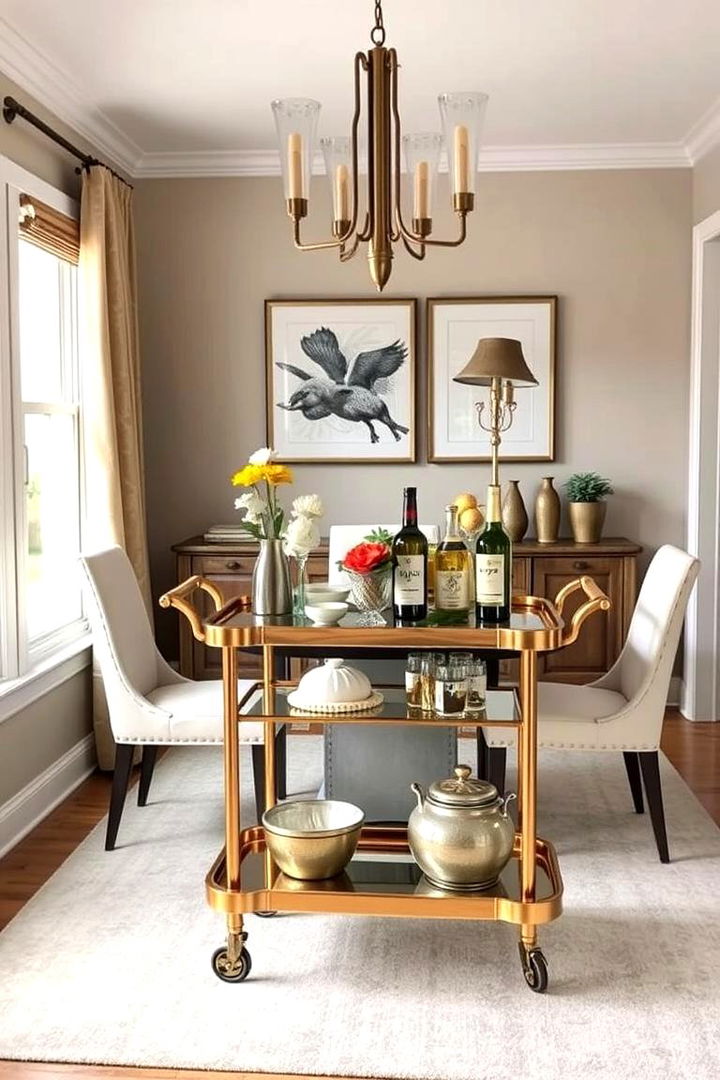
A unique bar cart designed with 70s sensibilities becomes an instant conversation piece and a functional addition to your dining room. This retro accessory combines practicality with an unmistakable vintage style, offering an organized space for serving drinks and storing glassware. Its intricate design, featuring bold lines and metallic finishes, provides a focal point that enhances your retro ambiance. Beyond its decorative appeal, the bar cart adds a layer of hospitality and social interaction to the dining experience. This design choice seamlessly merges function with flair, capturing the lively spirit of the era while ensuring your gatherings are both stylish and efficient.
20. Retro Chandeliers as Centerpieces
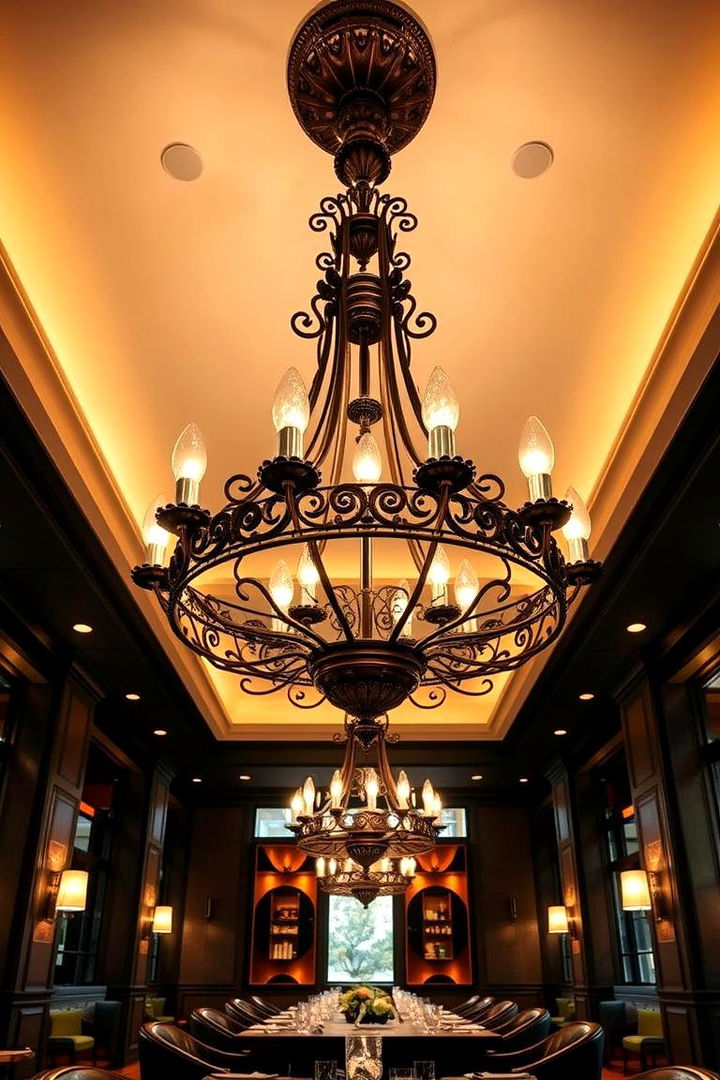
Retro chandeliers serve as stunning centerpieces that define the character of a 70s dining room. Their intricate designs, often featuring a mix of metal finishes and bold forms, provide both illumination and an aesthetic focal point. These chandeliers create an inviting atmosphere through a carefully balanced interplay of light and shadow, elevating the room’s overall ambiance. Practical in function and rich in history, they transform everyday dining into an experience marked by sophistication and vintage charm. The fusion of artistic design with functional brilliance makes retro chandeliers a timeless choice for adding drama and elegance to your dining space.
21. Distinctive Sideboard Styles

Sideboards in a 70s dining room are more than just functional storage; they are key design elements that herald retro charm. With unique finishes, bold hardware, and intricate details, distinctive sideboards combine practical storage with a statement of style. They organize dining essentials while providing a platform for displaying nostalgic decor and curated accessories. This design solution not only maximizes utility but also anchors the room with a touch of vintage elegance. The results are both aesthetically pleasing and highly functional, ensuring your dining area remains clutter-free yet as engaging as the era it celebrates.
22. Creative Space Layout Solutions
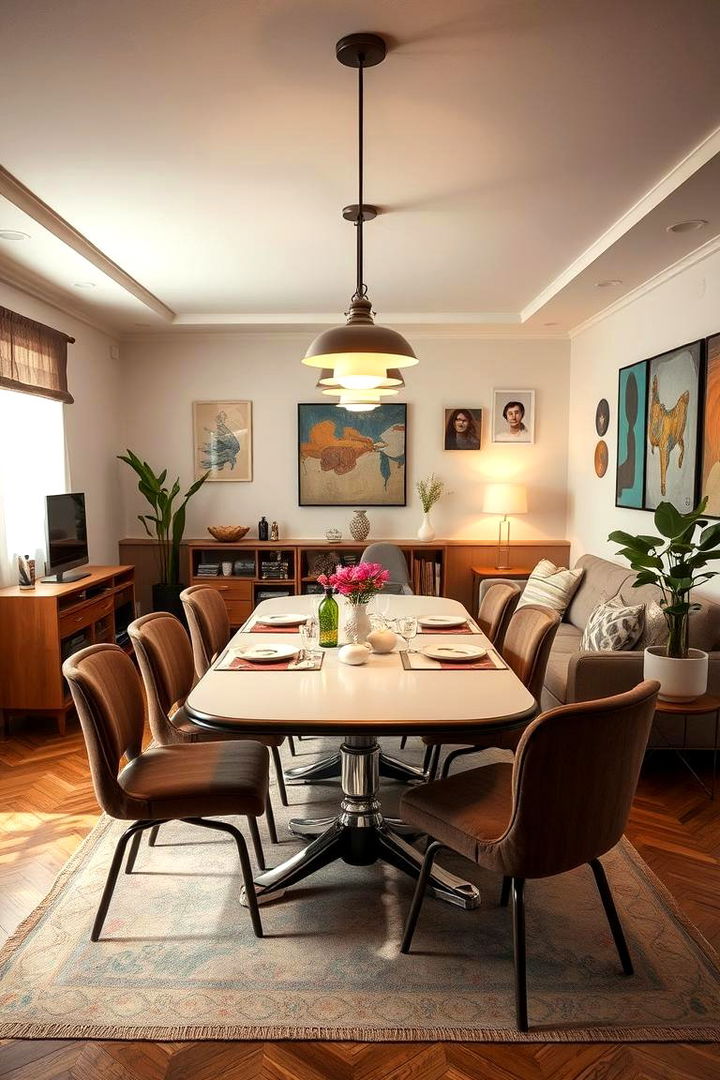
Creative space layouts are essential for maximizing a 70s dining room’s functionality and aesthetic appeal. By thoughtfully arranging vintage-inspired furniture and decor, you can create an open, inviting environment that encourages conversation and comfort. This approach not only enhances the practical aspects of dining but also highlights retro design elements in a balanced composition. The interplay between strategically placed seating, lighting, and accessories fosters an adaptable space, perfect for both intimate dinners and lively gatherings. Embracing innovative layouts leads to a more harmonious room that seamlessly marries aesthetics with everyday practicality, breathing new life into your dining experience.
Conclusion:
Summing up, these 70s dining room design ideas weave together nostalgia, vibrant energy, and timeless functionality to redefine modern dining experiences. Each idea offers practical benefits from flexible layouts to bold accents that enhance your space. The blend of vintage charm with everyday usability invites you to experiment and create a memorable dining environment that speaks to both comfort and style. Embrace these creative design inspirations to transform your room into a vibrant tribute to the past, while enjoying every modern convenience.



